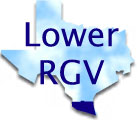| 1.0 | TRAVEL AND TRAFFIC MANAGEMENT |
| 1.3.0 | ITS shall include a Route Guidance (RG) function. Route Guidance will provide travelers with directions to selected destinations. Four functions are provided, which are, (1) Provide Directions, (2) Static Mode, (3) Real-Time Mode, and (4) User Interface. |
| 1.3.1 | RG shall include the capability to Provide Directions to travelers. |
| 1.3.1.1 | The Provide Directions function shall provide travelers with directions to their selected destination locations. |
| 1.3.1.2 | The Provide Directions function shall issue directions to travelers based on information about current conditions of transportation systems. |
| 1.3.1.2.1 | Current transportation system conditions upon which directions to travelers is based shall include, but not be limited to, the following: |
| 1.3.1.3 | The Provide Directions function shall issue traveler directions that are simple and easy to understand, providing turning instructions on which way to turn onto including, but not limited to, the following: |
| 1.3.2 | RG shall include a Static Mode for issuing information to travelers. |
| 1.3.2.2 | Static Mode infrastructure systems shall provide the capability to have two-way communications between the traveler and the infrastructure. |
| 1.3.2.3 | The Real-Time Mode shall provide the capability for autonomous operation of mobile based systems. |
| 1.3.2.3.1 | Autonomous Mobile Based systems shall have the capability to operate independent of infrastructure. |
| 1.3.3.1 | The Real-Time Mode shall utilize current travel condition information to provide performance that is enhanced over the Static Mode performance, to include, but not be limited to, the following: |
| 1.3.3.2 | The Real-Time Mode shall include the capability to operate in either or both of the following two configurations: |
| 1.3.3.2.2 | If current real-time information is included in route determination, the system shall be denoted as an Infrastructure-based real-time system. |
| 1.3.3.3 | The Real-Time Mode shall provide the capability for autonomous operation of mobile-based systems. |
| 1.3.4 | RG shall include a User Interface function. |
| 1.3.4.2 | Mobile systems shall use the best information available to provide routing instructions. |
| 1.3.4.2.1 | Mobile systems shall provide the capability for individual travelers to customize the routing selected for them. |
| 1.3.4.2.2 | Mobile systems shall allow customization of traveler's routing based on certain conditions specified by the traveler to include, but not be limited to, the following: |
| 1.3.4.3 | Infrastructure-based systems shall permit individual travelers to customize their routing selection. |
| 6.0 | ADVANCED VEHICLE SAFETY SYSTEMS |
| 6.7 | AUTOMATED VEHICLE OPERATION |
| 6.7.1 | AVO service shall include an Automated Highway System (AHS), the Target Level System. |
| 6.7.1.1 | AHS shall include an Automated Check-In Subsystem (ACIS). |
| 6.7.1.1.3 | The ACIS shall be capable of safely controlling access to AHS. |
| 6.7.1.2 | AHS shall include a Vehicle Control Subsystem (VCS). |
| 6.7.1.2.1 | VCS shall be capable of determining the condition, location, and motion of each vehicle on the automated lanes. |
| 6.7.1.2.3 | VCS shall automatically control the vehicles on AHS. |
| 6.7.1.3 | AHS shall include an Automated Check-Out Subsystem (ACOS). |
| 6.7.1.3.2 | ACOS shall be capable of safely controlling egress from AHS. |
| 6.7.2 | AVO service shall include a Partially Automated Highway System (PAHS) as a Transitional System. |
| 6.7.2.1 | PAHS shall include Vehicle Subsystems which utilize capabilities of collision avoidance systems and other systems to implement safe "platooning" and other transitional levels of performance. |
| 6.7.2.3 | PAHS shall include a Driver Subsystem which utilizes capabilities of driver alertness systems and other systems to assist in managing vehicles in situations other than full automatic control. |
| | |












 Web Spinner Technology.
Web Spinner Technology.